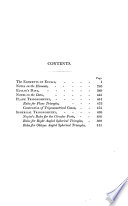 | Euclid - 1835 - 540 pages
...difference ; and since BC, FG are parallel, (2. 6.) EC is to CF, as EB to BG; that is, the sum of the sides is to their difference, as the tangent of half the sum of the angles at the base to the tangent of half their difference. * PROP. IV. FIG. 8. In a plane triangle,... | |
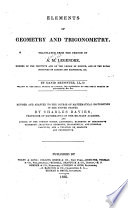 | Adrien Marie Legendre - Geometry - 1836 - 394 pages
...c=2p — 2c, a+c — 6=2p — 26; hence THEOREM V. In every rectilineal triangle, the sum of two sides is to their difference as the tangent of half the sum of the angles opposite those sides, to the tangent of half their difference. For. AB : BC : : sin C : sin... | |
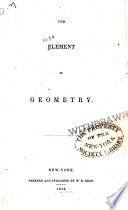 | John Playfair - Geometry - 1836 - 148 pages
...three being given, the fourth is also given. PROP. III. i In a plane triangle, the sum of any two sides is to their difference, as the tangent of half the sum of the angles at the base, to the tangent of half their difference. Let ABC be a plane triangle, the sum of... | |
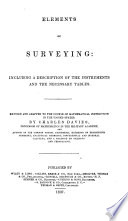 | Charles Davies - Navigation - 1837 - 342 pages
...AC :: sin C : sin B. THEOREM II. In any triangle, the sum of the two sides containing eithet angle, is to their difference, as the tangent of half the sum of the two other angles, to the tangent of half their difference. 58. Let ACB be a triangle : then will AB+AC:... | |
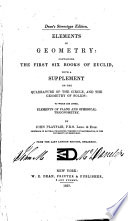 | John Playfair - Euclid's Elements - 1837 - 332 pages
...BC is parallel to FG, CE : CF : : BE : BG, (2. 6.) that is, the sum of the two sides of the triangle ABC is to their difference as the tangent of half the sum of the angles opposite to those sides to the tangent of half their difference. 325 PROP. V. THEOR. If a perpendicular... | |
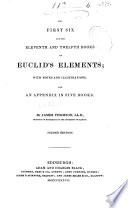 | Euclid, James Thomson - Geometry - 1837 - 410 pages
...sine of a right angle is equal to the radius. PROP. III. THEOR. THE sum of any two sides of a triangle is to their difference, as the tangent of half the sum of the angles opposite to those sides, is to the tangent of half their difference. Let ABC be a triangle,... | |
 | Andrew Bell - Euclid's Elements - 1837 - 290 pages
...demonstrated that AB : BC = sin C : sin A. PROPOSITION VI. THEOREM. The sum of two sides of a triangle is to their difference as the tangent of half the sum of me angles at the base to the tangent of half their difference. Let ABC be any triangle, then if B and... | |
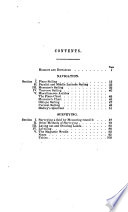 | Jeremiah Day - Geometry - 1838 - 416 pages
...therefore, from the preceding proposition, (Alg. 389.) that the sum of any two sides of a triangle, is to their difference ; as the tangent of half the sum of the opposite angles, to the tangent of half their difference. This is the second theorem applied to the... | |
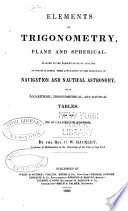 | Charles William Hackley - Trigonometry - 1838 - 338 pages
...tan £ (A -f- B) : tan \ (A — B) That is to say, the sum of two of the sides of a plane triangle is to their difference as the tangent of half the sum of the opposite angles is to the tangent of half their difference. This proportion is employed when two sides... | |
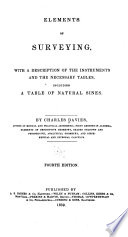 | Charles Davies - Surveying - 1839 - 376 pages
...AC :: sin C : sin B. THEOREM II. In any triangle, the sum of the two sides containing eithei angk, is to their difference, as the tangent of half the sum of the two other angles, to the tangent of haJ/ their difference. 58. Let ACB be a triangle : then will AB+AC:... | |
| |